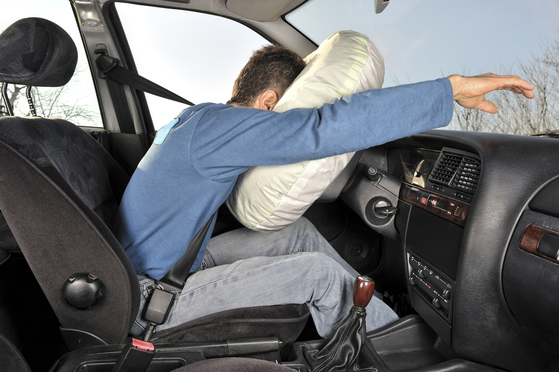Rudolph J Di Massa Jr And Jarret P Hitchings

November 14, 2019 | The Legal Intelligencer
Sympathy for the Debtor? Not When It Comes to Student LoansDiscussions of student debt often include the blanket assumption that not even bankruptcy can relieve a borrower of his student loan obligations. While this assumption is incorrect, a debtor must provide compelling evidence that an undue hardship will result if the debtor is required to repay the loan.
By Rudolph J. Di Massa Jr. and Jarret P. Hitchings
7 minute read

May 23, 2019 | The Legal Intelligencer
Limitations on the Utility of Testimony Elicited During a Section 341 MeetingSection 343 of the Bankruptcy Code provides that a “debtor shall appear and submit to examination under oath at the meeting of creditors under Section 341(a)” held at the outset of a bankruptcy case.
By Rudolph J. Di Massa, Jr. and Jarret P. Hitchings
7 minute read

June 29, 2018 | The Legal Intelligencer
Suit Yourself: Actions Against Trustees Not Subject to 'Barton' DoctrineThe Barton doctrine is a legal principle that limits a court's jurisdiction over a cause of action brought against a court-appointed receiver.
By Rudolph J. Di Massa, Jr. and Jarret P. Hitchings
2 minute read

February 15, 2018 | The Legal Intelligencer
Approval of Fee Defense Provisions in Retention Agreements Post-'ASARCO'The Bankruptcy Code authorizes a debtor (or its bankruptcy trustee) to retain and compensate attorneys and other professionals during the course of the debtor's bankruptcy case.
By Rudolph J. Di Massa Jr. and Jarret P. Hitchings
8 minute read

October 05, 2017 | The Legal Intelligencer
Court: Debt to Paramour Obtained by Fraud Partially NondischargeablePursuant to Section 727(a) of the Bankruptcy Code, an individual debtor can obtain a discharge of his pre-petition debts, see 11 U.S.C. Section 727(a). In general, the effect of a discharge is to relieve the debtor from all debts that arose before the date the debtor filed for bankruptcy protection.
By Rudolph J. Di Massa, Jr. and Jarret P. Hitchings
22 minute read

July 04, 2017 | The Legal Intelligencer
One Contract, Indivisible, With Defenses and 'Kiwi' for AllUnder Section 365(a) of the Bankruptcy Code, a debtor in bankruptcy may assume executory contracts or unexpired leases to which the debtor was a party before its bankruptcy filing. Before it is permitted to do so, however, the debtor must cure any and all defaults existing under the agreement (see 11 U.S.C. 365(b)(1)), thereby making the nondebtor counter-party "whole" upon assumption.
By Rudolph J. Di Massa Jr. and Jarret P. Hitchings
15 minute read

June 30, 2016 | The Legal Intelligencer
A Tale of Two States: Puerto Rico and Chapter 9Puerto Rico is in the midst of a financial crisis. Over the past few years, its public debt skyrocketed while its government revenue sharply declined. In order to address its economic problems and to avoid mass public-worker layoffs and cuts in public services, the unincorporated U.S. territory issued billions of dollars in face value of municipal bonds. These bonds were readily saleable to investors in the United States due to their tax-exempt status and comparatively high yields. Now, however, Puerto Rico is unable to service its extraordinary public debt and has begun to default. While the specific causes of this crisis can be debated, the U.S. Supreme Court in Puerto Rico v. Franklin California Tax-Free Trust, No. 15-233 (U.S. June 13, 2016) recently confirmed that two restructuring tools are unavailable to Puerto Rico and its distressed municipalities: relief under Chapter 9 of the U.S. Bankruptcy Code and local legislation providing for the nonconsensual restructuring of municipal indebtedness.
By Rudolph J. Di Massa Jr. and Jarret P. Hitchings
12 minute read

December 18, 2015 | The Legal Intelligencer
No Discharge of Debt Arising From Willful and Malicious InjuryPursuant to Section 727 of the U.S. Bankruptcy Code, an individual Chapter 7 debtor may receive a discharge "from all debts that arose before the date of the order for relief under this chapter." A Chapter 11 or Chapter 13 debtor may receive similar relief pursuant to Sections 1141 and 1328(b), respectively. Under any chapter, this discharge serves the Bankruptcy Code's principal goal of relieving a debtor from his or her prepetition obligations and providing the debtor with a "fresh start" on emergence from bankruptcy. Notwithstanding this goal, a bankruptcy discharge is not all-encompassing: it is limited by Section 523(a), which expressly excepts particular debts from the scope of the debtor's discharge. Among other categories, the list of nondischargeable debts includes debts arising from certain tax or customs duties, money or property to the extent obtained by fraud, domestic support obligations, and government fines or penalties. In addition, Section 523(a)(6) excepts from discharge a debt "for willful and malicious injury by the debtor to another entity."
By Rudolph J. Di Massa Jr. and Jarret P. Hitchings
6 minute read

December 18, 2015 | The Legal Intelligencer
No Discharge of Debt Arising From Willful and Malicious InjuryPursuant to Section 727 of the U.S. Bankruptcy Code, an individual Chapter 7 debtor may receive a discharge "from all debts that arose before the date of the order for relief under this chapter." A Chapter 11 or Chapter 13 debtor may receive similar relief pursuant to Sections 1141 and 1328(b), respectively. Under any chapter, this discharge serves the Bankruptcy Code's principal goal of relieving a debtor from his or her prepetition obligations and providing the debtor with a "fresh start" on emergence from bankruptcy. Notwithstanding this goal, a bankruptcy discharge is not all-encompassing: it is limited by Section 523(a), which expressly excepts particular debts from the scope of the debtor's discharge. Among other categories, the list of nondischargeable debts includes debts arising from certain tax or customs duties, money or property to the extent obtained by fraud, domestic support obligations, and government fines or penalties. In addition, Section 523(a)(6) excepts from discharge a debt "for willful and malicious injury by the debtor to another entity."
By Rudolph J. Di Massa Jr. and Jarret P. Hitchings
6 minute read

June 19, 2015 | The Legal Intelligencer
Numerosity Requirement for Filing Involuntary Bankruptcy PetitionSection 303 of the Bankruptcy Code provides creditors with a mechanism to force a recalcitrant debtor into bankruptcy through the filing of an involuntary petition for relief. Pursuant to this section, an involuntary bankruptcy case may be commenced only under Chapter 7 or 11 of the Bankruptcy Code, and may only be brought against a person otherwise qualified to file a voluntary petition. Where the purported debtor has fewer than 12 creditors, the involuntary petition need only be filed by a single creditor. However, where the purported debtor has 12 or more creditors, the involuntary petition must be filed by at least three creditors.
By Rudolph J. Di Massa Jr. and Jarret P. Hitchings
7 minute read
Trending Stories
- 1Courts, Lawyers Press On With Business as SoCal Wildfires Rage
- 2Florida, a Political Epicenter, Is the Site of Brownstein Hyatt's 13th Office
- 3Law Firms Close Southern California Offices Amid Devastating Wildfires
- 4Lawsuit alleges racial and gender discrimination led to an Air Force contractor's death at California airfield
- 5Holland & Knight Picks Up 8 Private Wealth Lawyers in Los Angeles
More from ALM
- Scan In Progress: Litigators Leverage AI to Screen Prospective Jurors 1 minute read
- Legal Speak at General Counsel Conference East 2024: Match Group's Katie Dugan & Herrick's Carol Goodman 1 minute read
- Legal Speak at General Counsel Conference East 2024: Eric Wall, Executive VP, Syllo 1 minute read



